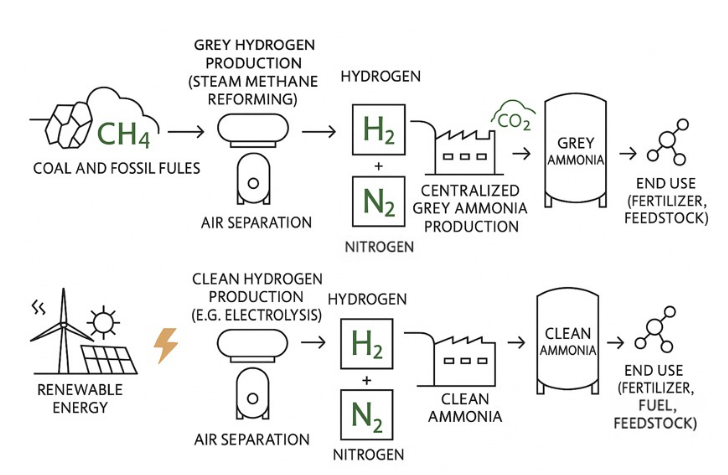
Despite the advances in organic farming over recent decades, European agriculture still depends on a difficult-to-replace input: ammonia. Without it, it would be impossible to produce the fertilisers that sustain around 90% of Europe’s agricultural output. The problem lies in how ammonia is produced: a highly energy-intensive process based on fossil fuels that, on a global scale, consumes around 2% of primary energy and generates 1.5% of CO₂ emissions.
New technologies aim to redefine the way this compound is produced in order to move toward a cleaner and more resilient industry. These innovations target the two key phases of ammonia production: hydrogen generation and atmospheric nitrogen fixation. Both steps, as carried out in the traditional model, depend on natural gas, which increases the sector’s environmental footprint, makes Europe heavily dependent on imported resources, and undermines its strategic autonomy.
In the first stage, which is dedicated to hydrogen production, the most promising technology is water electrolysis. This process separates hydrogen and oxygen molecules in water using electricity generated from renewable energy sources rather than natural gas. In the second stage, progress is being made in modernising the nitrogen fixation process (Haber-Bosch) through more sustainable chemical routes that use, for instance, visible light to activate a chemical reaction between nitrogen and a molybdenum catalyst. The key lies in developing solutions that enable decentralised ammonia production in locations with direct access to renewable energy, where it is possible to store or convert this compound into fertiliser.
In parallel, biological approaches are being developed that harness modified bacteria and enzymes to replicate —and optimise— the natural nitrogen fixation performed by certain plants. These microorganisms can release ammonia directly into the substrate, significantly reducing dependence on synthetic fertilisers.
Decarbonising fertiliser production is a strategic bet to transform the agricultural model, ensure food security, and move towards a more sustainable farming system. But the solution does not rely solely on technology: it requires a shift in cultivation practices, nutrient management, and optimisation of input use, integrating agronomic practices that reduce dependence on synthetic fertilisers and improve the overall efficiency of the production system.

Image made with Artificial Intelligence, inspired by Ammobia Inc. scheme.
For more information, see: National Office of Foresight and Strategy (coord.). Resilient EU2030. Madrid: Ministry of the Presidency, 2021; Sagues, William J. et al. “Decarbonizing agriculture through the conversion of animal manure to dietary protein and ammonia fertiliser.” Bioresource Technology, 297, 2020; Santos, Andreia F. et al. “From wastewater to fertiliser products: Alternative paths to mitigate phosphorus demand in European countries.” Chemosphere, 284, 2021; World Economic Forum. “Top 10 Emerging Technologies of 2025.” World Economic Forum, 2025; and, World Economic Forum. “What is nitrogen fixation, and how can we make it more sustainable?” World Economic Forum, 2025.